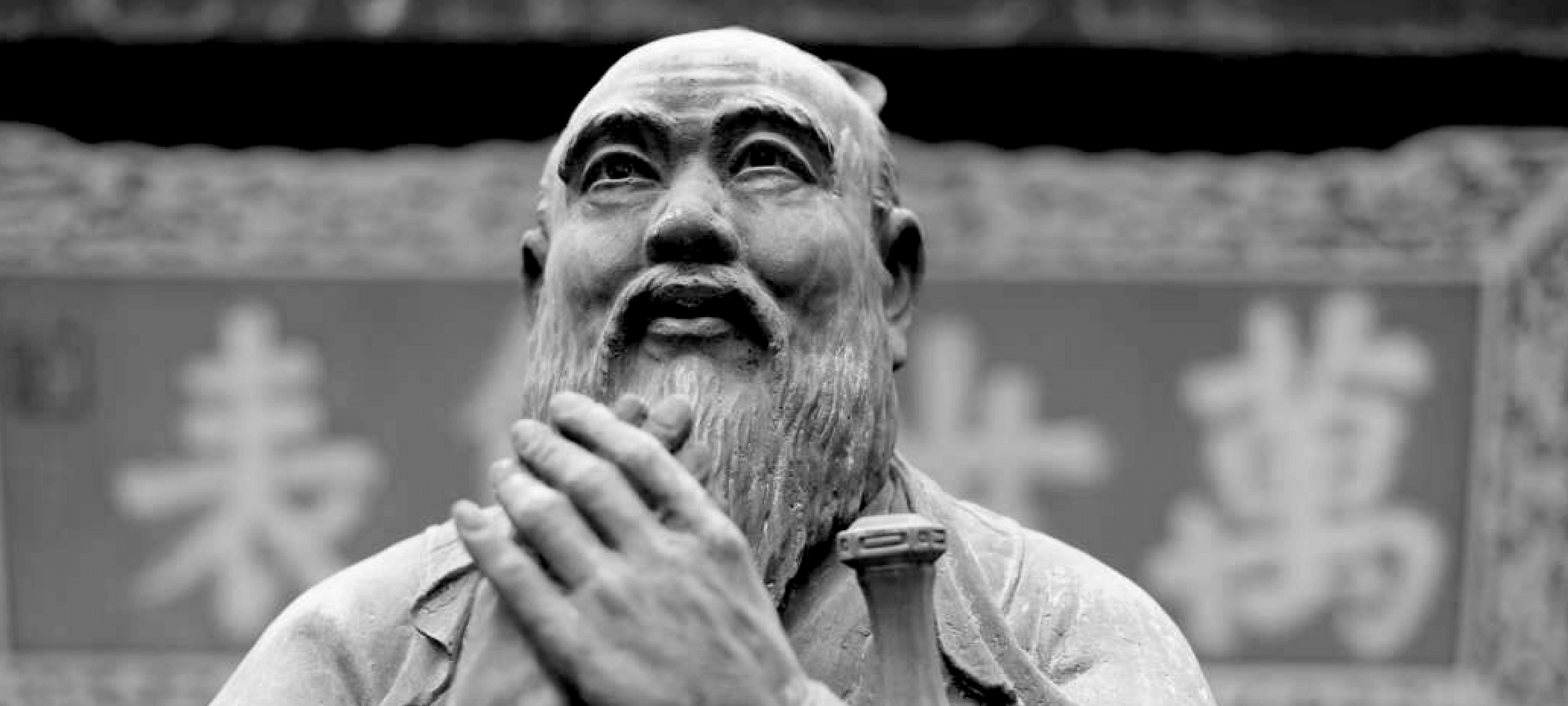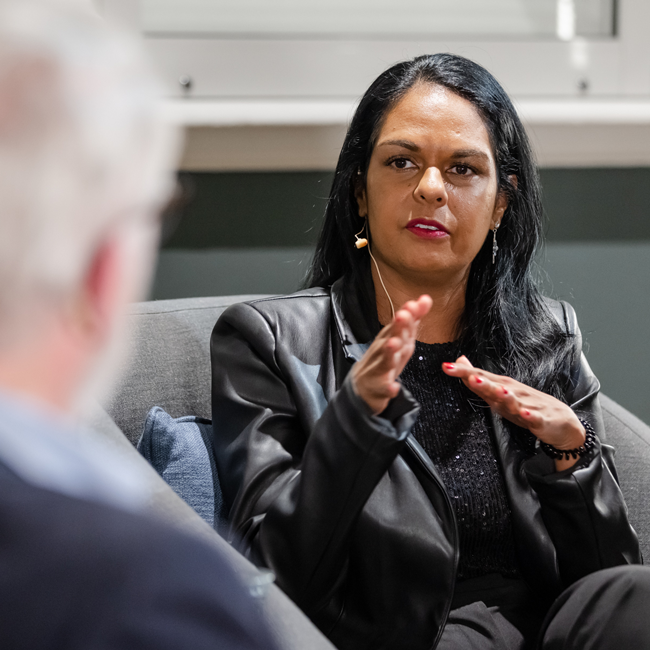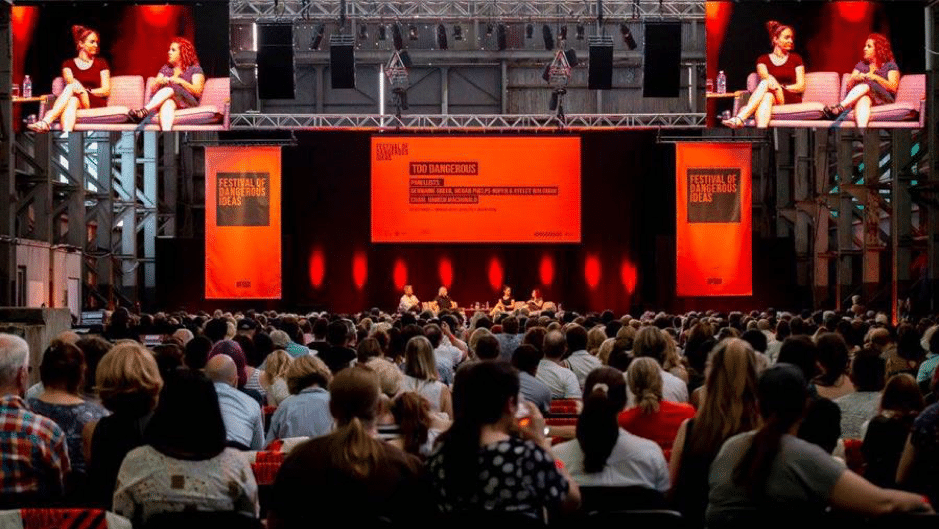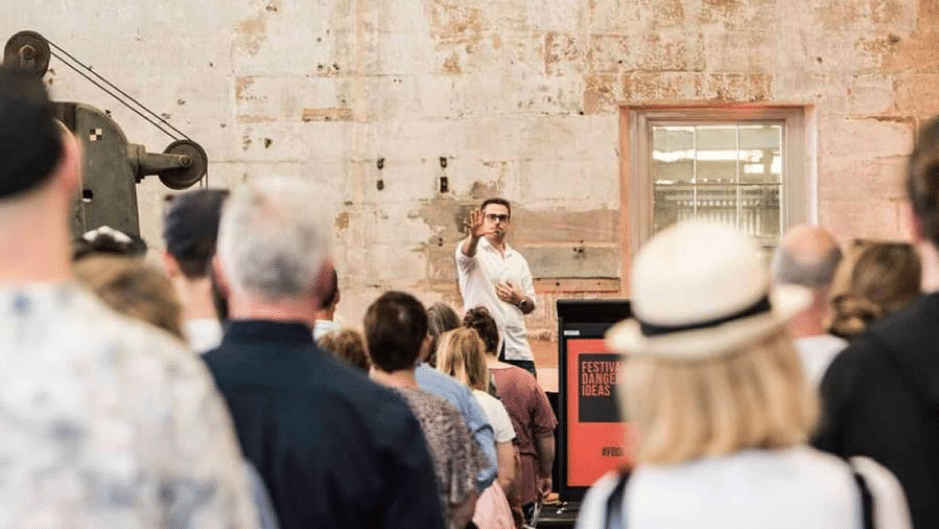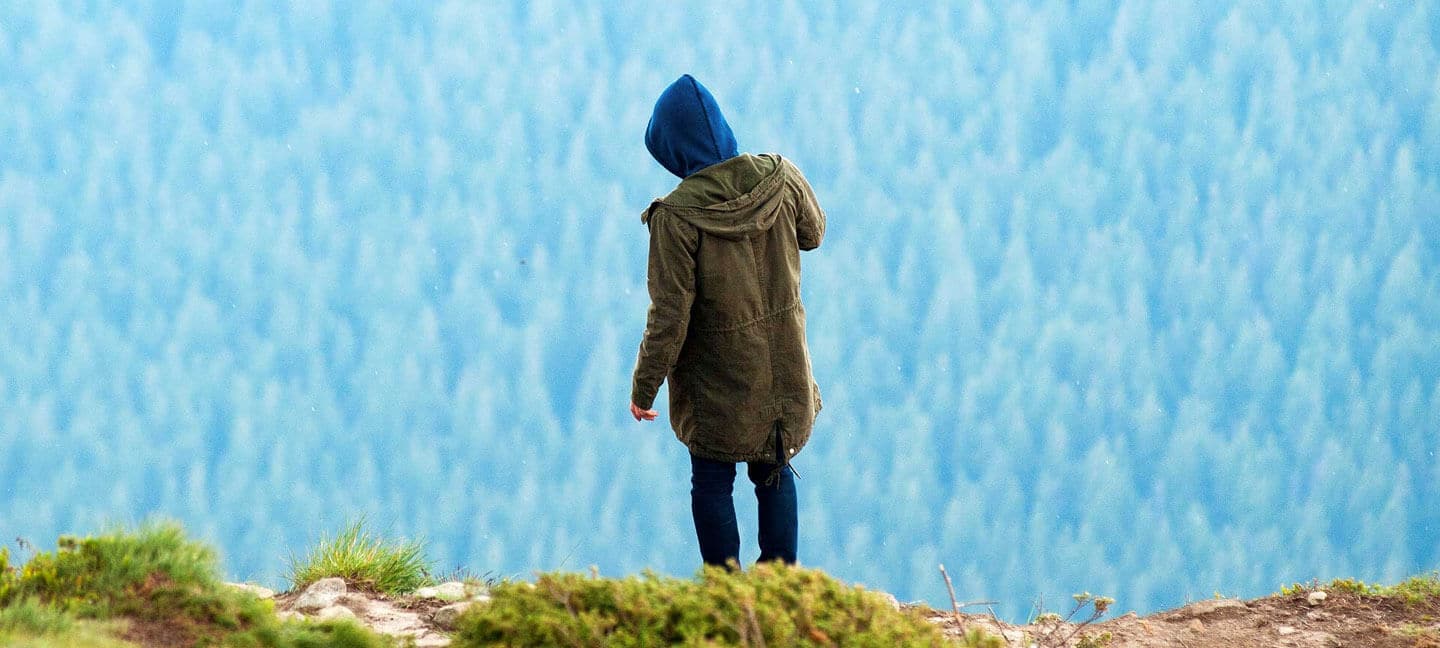The thorny ethics of corporate sponsorships
The thorny ethics of corporate sponsorships
WATCHBusiness + Leadership
BY The Ethics Alliance The Ethics Centre 10 DEC 2019
With a workforce that increasingly prizes purpose led organisations, how can businesses make mutually beneficial brand alignments as an extension of their own values?
And what should they do if it all goes horribly wrong? In this series of short interviews, The Ethics Alliance draw on the experiences of organisations who have successfully overseen hugely profitable and meaningful partnerships and weathered the crisis of negative associations to pave a way forward.
Ethics in your inbox.
Get the latest inspiration, intelligence, events & more.
By signing up you agree to our privacy policy
You might be interested in…
Opinion + Analysis
Business + Leadership
Why trust-building strategies should get the benefit of the doubt
Opinion + Analysis
Business + Leadership, Relationships
Unconscious bias: we’re blind to our own prejudice
Opinion + Analysis
Business + Leadership
Managing corporate culture
Opinion + Analysis
Business + Leadership, Politics + Human Rights
Australia’s fiscal debt will cost Gen Z’s future
BY The Ethics Alliance
The Ethics Alliance is a community of organisations sharing insights and learning together, to find a better way of doing business. The Alliance is an initiative of The Ethics Centre.
BY The Ethics Centre
The Ethics Centre is a not-for-profit organisation developing innovative programs, services and experiences, designed to bring ethics to the centre of professional and personal life.
To fix the problem of deepfakes we must treat the cause, not the symptoms

To fix the problem of deepfakes we must treat the cause, not the symptoms
Opinion + AnalysisRelationshipsScience + Technology
BY Matthew Beard The Ethics Centre 5 DEC 2019
This article was written for, and first published by The Guardian. Republished with permission.
Once technology is released, it’s like herding cats. Why do we continue to let the tech sector manage its own mess?
We haven’t yet seen a clear frontrunner emerge as the Democratic candidate for the 2020 US election. But I’ve been interested in another race – the race to see which buzzword is going to be a pivotal issue in political reporting, hot takes and the general political introspection that elections bring. In 2016 it was “fake news”. “Deepfake” is shoring up as one of the leading candidates for 2020.
This week the US House of Representatives intelligence committee asked Facebook, Twitter and Google what they were planning to do to combat deepfakes in the 2020 election. And it’s a fair question. With a bit of work, deepfakes could be convincing and misleading enough to make fake news look like child’s play.
Deepfake, a portmanteau of “deep learning” and “fake”, refers to AI software that can superimpose a digital composite face on to an existing video (and sometimes audio) of a person.
The term first rose to prominence when Motherboard reported on a Reddit user who was using AI to superimpose the faces of film stars on to existing porn videos, creating (with varying degrees of realness) porn starring Emma Watson, Gal Gadot, Scarlett Johansson and an array of other female celebrities.
However, there are also a range of political possibilities. Filmmaker Jordan Peele highlighted some of the harmful potential in an eerie video produced with Buzzfeed, in which he literally puts his words in Barack Obama’s mouth. Satisfying or not, hearing Obama call US president Trump a “total and complete dipshit” is concerning, given he never said it.
Just as concerning as the potential for deepfakes to be abused is that tech platforms are struggling to deal with them. For one thing, their content moderation issues are well documented. Most recently, a doctored video of Nancy Pelosi, slowed and pitch-edited to make her appear drunk, was tweeted by Trump. Twitter did not remove the video, YouTube did, and Facebook de-ranked it in the news feed.
For another, they have already tried, and failed, to moderate deepfakes. In a laudably fast response to the non-consensual pornographic deepfakes, Twitter, Gfycat, Pornhub and other platforms quickly acted to remove them and develop technology to help them do it.
However, once technology is released it’s like herding cats. Deepfakes are a moving feast and as soon as moderators find a way of detecting them, people will find a workaround.
But while there are important questions about how to deal with deepfakes, we’re making a mistake by siloing it off from broader questions and looking for exclusively technological solutions. We made the same mistake with fake news, where the prime offender was seen to be tech platforms rather than the politicians and journalists who had created an environment where lies could flourish.
The furore over deepfakes is a microcosm for the larger social discussion about the ethics of technology. It’s pretty clear the software shouldn’t have been developed and has led – and will continue to lead – to disproportionately more harm than good. And the lesson wasn’t learned. Recently the creator of an app called “DeepNude”, designed to give a realistic approximation of how a woman would look naked based on a clothed image, cancelled the launch fearing “the probability that people will misuse it is too high”.
What the legitimate use for this app is, I don’t know, but the response is revealing in how predictable it is. Reporting triggers some level of public outcry, at which suddenly tech developers realise the error of their ways. Theirs is the conscience of hindsight: feeling bad after the fact rather than proactively looking for ways to advance the common good, treat people fairly and minimise potential harm. By now we should know better and expect more.
“Technology is a way of seeing the world. It’s a kind of promise – that we can bring the world under our control and bend it to our will.”
Why then do we continue to let the tech sector manage its own mess? Partly it’s because it is difficult, but it’s also because we’re still addicted to the promise of technology even as we come to criticise it. Technology is a way of seeing the world. It’s a kind of promise – that we can bring the world under our control and bend it to our will. Deepfakes afford us the ability to manipulate a person’s image. We can make them speak and move as we please, with a ready-made, if weak, moral defence: “No people were harmed in the making of this deepfake.”
But in asking for a technological fix to deepfakes, we’re fuelling the same logic that brought us here. Want to solve Silicon Valley? There’s an app for that! Eventually, maybe, that app will work. But we’re still treating the symptoms, not the cause.
The discussion around ethics and regulation in technology needs to expand to include more existential questions. How should we respond to the promises of technology? Do we really want the world to be completely under our control? What are the moral costs of doing this? What does it mean to see every unfulfilled desire as something that can be solved with an app?
Yes, we need to think about the bad actors who are going to use technology to manipulate, harm and abuse. We need to consider the now obvious fact that if a technology exists, someone is going to use it to optimise their orgasms. But we also need to consider what it means when the only place we can turn to solve the problems of technology is itself technological.
Big tech firms have an enormous set of moral and political responsibilities and it’s good they’re being asked to live up to them. An industry-wide commitment to basic legal standards, significant regulation and technological ethics will go a long way to solving the immediate harms of bad tech design. But it won’t get us out of the technological paradigm we seem to be stuck in. For that we don’t just need tech developers to read some moral philosophy. We need our politicians and citizens to do the same.
“At the moment we’re dancing around the edges of the issue, playing whack-a-mole as new technologies arise.”
At the moment we’re dancing around the edges of the issue, playing whack-a-mole as new technologies arise. We treat tech design and development like it’s inevitable. As a result, we aim to minimise risks rather than look more deeply at the values, goals and moral commitments built into the technology. As well as asking how we stop deepfakes, we need to ask why someone thought they’d be a good idea to begin with. There’s no app for that.
Ethics in your inbox.
Get the latest inspiration, intelligence, events & more.
By signing up you agree to our privacy policy
You might be interested in…
Opinion + Analysis
Relationships
Five steps to help you through a difficult decision
Big thinker
Politics + Human Rights, Relationships
Big Thinker: Confucius
Big thinker
Science + Technology
Seven Influencers of Science Who Helped Change the World
Opinion + Analysis
Business + Leadership, Relationships
Facing tough decisions around redundancies? Here are some things to consider
BY Matthew Beard
Matt is a moral philosopher with a background in applied and military ethics. In 2016, Matt won the Australasian Association of Philosophy prize for media engagement. Formerly a fellow at The Ethics Centre, Matt is currently host on ABC’s Short & Curly podcast and the Vincent Fairfax Fellowship Program Director.
BY The Ethics Centre
The Ethics Centre is a not-for-profit organisation developing innovative programs, services and experiences, designed to bring ethics to the centre of professional and personal life.
Beyond the headlines of the Westpac breaches

Beyond the headlines of the Westpac breaches
Opinion + AnalysisBusiness + LeadershipRelationships
BY Simon Longstaff The Ethics Centre 28 NOV 2019
As I look back on the week of turmoil that has engulfed Westpac, my overwhelming feeling is one of sadness.
I am sad for the children whose lives may have been savaged by sexual predators using the bank’s faulty systems. I am sad for the tens of thousands of Westpac employees who may feel tainted by association with the bank’s failings. I am sad for individuals, like Brian Hartzer and Lindsay Maxsted, whom I believe will be remembered more for the manner of their parting from the bank than for all the good that they did along the way. All of them deserve better.
None of this lessens my judgement about the seriousness of the faults identified by Austrac. Nor is sadness a reason for limiting the adverse consequences borne by individuals and the company.
Rather, in the pell-mell of the moment – super-charged by media and politicians enjoying a ‘gotcha’ moment – it is easy to forget the human dimension of what has occurred – whether it be the impact on the victims of sexual exploitation or the person whose pride in their employer has been dented.
Behind the headlines, beyond the outrage, there are people whose lives are in turmoil. Some are very powerful. Some are amongst the most vulnerable in the world. They are united by the fact that they are all hurt by failures of this magnitude.
For Westpac’s part, the company has not sought to downplay the seriousness of what has occurred. There has not been any deflection of blame. There has been no attempt to bury the truth. If anything, the bank’s commitment to a thorough investigation of underlying causes has worked to its disadvantage – especially in a world that demands that the acceptance of responsibility be immediate and consequential.
The issue of responsibility has two dimensions in this particular case: one particular to Westpac and the other more general. First, there are some people who are revelling in Westpac’s fall from grace. Many in this group oppose Westpac’s consistently progressive position on issues like sustainability, Indigenous affairs, etc. Some take particular delight in seeing the virtuous stumble. However, this relatively small group is dwarfed by the vast number of people who engage with the second dimension – the sense that we have passed beyond the days of responsible leadership of any kind.
I suspect that Westpac and its leadership are part of the ‘collateral damage’ caused by the destruction of public trust in institutions and leadership more generally.
When was the last time a government minister, of any party in any Australian government, resigned because of a failure in their department? Why are business leaders responsible for everything good done by a company – but never any of its failures?
Some people think that the general public doesn’t notice this … or that they do not care. They’re wrong on both counts. I suspect that the general public has had a gut-full of the hypocrisy. They want to know why the powerless constantly being held to account while the powerful escape all sanction?
I think that this is the fuel that fed the searing heat applied to Westpac and its leadership earlier this week. The issues in Westpac were always going to invite criticism but this was amplified by a certain schadenfreude amongst Westpac’s critics and the general public’s anger at leaders who refuse to accept responsibility.
So, what are we to make of this?
One of the lessons that people should keep in mind when they volunteer for a leadership role is that strategic leaders are always responsible; even when they are not personally culpable for what goes wrong on their watch. This is not fair. It’s not fair that a government minister be presumed to know of everything that is going on in their department. It’s not fair to expect company directors or executives to know all that is done in their name. It is not fair.
However, it is necessary that this completely unrealistic expectation, this ‘fiction’, be maintained and that leaders act as if it were true. Otherwise, the governance of complex organisations and institutions will collapse. Then things that are far worse than our necessary fictions will emerge to fill the void; the grim alternatives of anarchy or autocracy.
It’s sad that we have come to a point where this even needs to be said.
Ethics in your inbox.
Get the latest inspiration, intelligence, events & more.
By signing up you agree to our privacy policy
You might be interested in…
Opinion + Analysis
Relationships, Society + Culture
Community is hard, isolation is harder
Opinion + Analysis
Health + Wellbeing, Politics + Human Rights, Relationships, Science + Technology
The value of a human life
Opinion + Analysis
Relationships
The danger of a single view
Big thinker
Relationships
Big Thinker: Tyson Yunkaporta
BY Simon Longstaff
Simon Longstaff began his working life on Groote Eylandt in the Northern Territory of Australia. He is proud of his kinship ties to the Anindilyakwa people. After a period studying law in Sydney and teaching in Tasmania, he pursued postgraduate studies as a Member of Magdalene College, Cambridge. In 1991, Simon commenced his work as the first Executive Director of The Ethics Centre. In 2013, he was made an officer of the Order of Australia (AO) for “distinguished service to the community through the promotion of ethical standards in governance and business, to improving corporate responsibility, and to philosophy.” Simon is an Adjunct Professor of the Australian Graduate School of Management at UNSW, a Fellow of CPA Australia, the Royal Society of NSW and the Australian Risk Policy Institute.
BY The Ethics Centre
The Ethics Centre is a not-for-profit organisation developing innovative programs, services and experiences, designed to bring ethics to the centre of professional and personal life.
Renewing the culture of cricket

Renewing the culture of cricket
Opinion + AnalysisBusiness + LeadershipRelationshipsSociety + Culture
BY The Ethics Centre 26 NOV 2019
On March 24, 2018, at Newlands field in South Africa, Australian cricketer Cameron Bancroft was captured on camera tampering with the match ball with a piece of sandpaper in the middle of a test match.
It later emerged that the Australian team captain Steve Smith and vice-captain David Warner were complicit in the plan. The cheating was a clear breach of the rules of the game – and the global reaction to Bancroft’s act was explosive. International media seized on the story as commentators sought to unpack cricket’s arcane rules and its code of good sportsmanship. From backyard barbeques to current and former prime ministers, everyone had an opinion on the story.
For the players involved, retribution was swift. Smith and Warner received 12-month suspensions from Cricket Australia, whilst Bancroft received a nine-month suspension. The coach of the Australian team, Darren Lehman, quit his post before he had even left South Africa.
But it didn’t stop there. Within nine months, Cricket Australia lost four board directors – Bob Every, Chairman David Peever, Tony Harrison and former test cricket captain Mark Taylor – and saw the resignation of longstanding CEO James Sutherland as well as two of his most senior executives, Ben Amarfio and Pat Howard.
So, what happened between March and November? How did an ill-advised action on the part of a sportsman on the other side of the world lead to this spectacular implosion in the leadership ranks of a $400 million organisation?
The answer lies in the idea of “organisational culture,” and an independent review of the culture and governance of Cricket Australia by our organisation – The Ethics Centre.
Cricket Australia sits at the centre of a complex ecosystem that includes professional contract players, state and territory associations, amateur players (including many thousands of school children), broadcasters, sponsors, fans and hundreds of full-time staff. As such, the organisation carries responsibility for the success of our national teams, the popularity of the sport and the financial stability of the organisation.
In the aftermath of the Newland’s incident, many wanted to know whether the culture of Cricket Australia had in some way encouraged or sanctioned such a flagrant breach of the sport’s rules and codes of conduct.
Our Everest process was employed to measure Cricket Australia’s culture, by seeking to identify the gaps between the organisations “ethical framework” (its purpose, values and principles) and it’s lived behaviours.
We spoke at length with board members, current and former test cricketers, administrators and sponsors. We extensively reviewed policies, player and executive remuneration, ethical frameworks and codes of conduct.
Our final report, A Matter of Balance – which Cricket Australia chose to make public – ran to 147 pages and contained 42 detailed recommendations. Our key finding was that a focus on winning had led to the erosion of the organisation’s culture and a neglect of some important values. Aspects of Cricket Australia’s player management had served to encourage negative behaviours.
It was clear, with the release of the report, that many things needed to change at Cricket Australia. And change they did.
Cricket Australia committed to enacting 41 of the 42 recommendations made in the report.
In a recent cover story in Company Director magazine – a detailed examination of the way Cricket Australia responded in the aftermath of The Ethics Centre’s report – Cricket Australia’s new chairman Earl Eddings has this to say:
“With culture, it’s something you’ve got to keep working at, keep your eye on, keep nurturing. It’s not: we’ve done the ethics report, so now we’re right.”
Now, one year after the release of The Ethics Centre’s report, the culture of Cricket Australia is making a strong recovery. At the same time as our men’s team are rapidly regaining their mojo (it’s probably worth noting that our women’s team never lost it – but that’s another story).
Ethics in your inbox.
Get the latest inspiration, intelligence, events & more.
By signing up you agree to our privacy policy
You might be interested in…
Opinion + Analysis
Business + Leadership, Relationships
Facing tough decisions around redundancies? Here are some things to consider
Opinion + Analysis
Health + Wellbeing, Relationships, Society + Culture
Look at this: the power of women taking nude selfies
Explainer
Relationships
Ethics Explainer: Conscience
Opinion + Analysis
Business + Leadership
Our regulators are set up to fail by design
BY The Ethics Centre
The Ethics Centre is a not-for-profit organisation developing innovative programs, services and experiences, designed to bring ethics to the centre of professional and personal life.
The power of community to bring change
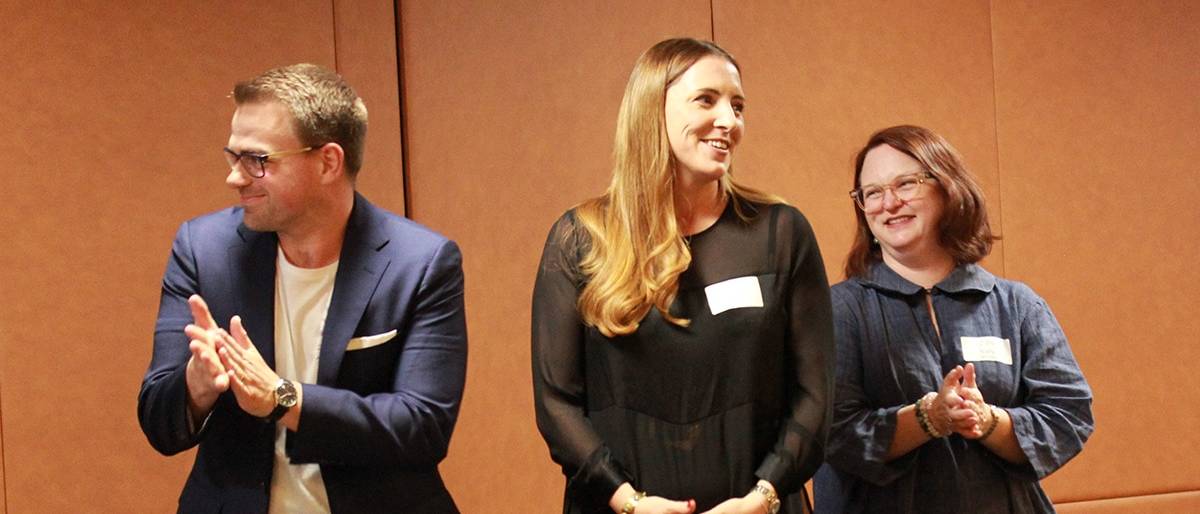
The power of community to bring change
Opinion + AnalysisSociety + Culture
BY The Ethics Centre 19 NOV 2019
On Thursday night, a group of impassioned supporters and philanthropists gathered for a raw look at the work required to get an Ethics Centre program off the ground.
It was our very first Pitch & Pledge event – a unique crowdfunding concept by The Funding Network where charities pitch their funding needs live to a room of curious minds.
The format required three of our program leaders – Alex Hirst, Sally Murphy and Matt Beard – to take to the stage to make a six minute appeal for support for their work. Alex shared why she believes the Festival of Dangerous Ideas is critical to a tolerant society, Sally argued why more people need access to our free counselling helpline, Ethi-call, and Matt canvassed the idea of a budding young philosopher to further our work.
Following their pitches and a barrage of interesting questions from the floor, our leaders were asked to leave the room for a nail-biting window of time while guests pledged their support for their favourite program.
In an electric, emotionally charged and heartwarming hour we raised over $80,000 across the three causes, as well as further pro-bono support. We are incredibly grateful for the generosity of those who attended, and invite you to take a look at the pitches below and consider if there’s one worthy of your backing as well.
1. Support a truly independent Festival of Dangerous Ideas
Alex compelled us to realise that 10 years on from the first Festival of Dangerous Ideas (FODI) in 2010, it’s no longer just a world of dangerous ideas we are considering – it’s the dangerous realities we need to be afraid of. Our modern world of opinion echo chambers and media algorithms that serve to confirm our biases, has lead to an inability across society to have informed and hard conversations about opposing views.
FODI is about challenging our ways of thinking, not confirming them. Sharing personal anecdotes and stories from FODI followers, Alex captured, to a rapt crowd, the sheer necessity of expansive thinking and contested ideas.
“Unchallenged ideas are after all some of the most dangerous, and they are reaching us in more ways than ever before. Reaching right into the heart of the home, and into our everyday lives.”
“If we are unable to have hard conversations, if we are untrained at listening to the ideas that we just don’t want to hear, then our ability as a society to face these dangerous realities together doesn’t exist”.
Ticket sales from the annual festival cover just 50% of festival running costs. Alex, and FODI, need support to bring critical thinking back to challenge dangerous realities in 2020.
Donate here: https://www.thefundingnetwork.com.au/ethics-centre
2. Help Ethi-call guide people through life’s tough decisions
Sally knows challenging situations. As a volunteer Ethi-call counsellor and manager of the service, she’s heard first-hand the difficult and often crippling dilemmas people face, and the impact a call with a trained expert can have.
In a landscape where communities are lacking connection, where neighbours don’t drop in for tea, families don’t spend quality time and friendships take place in text messages, more people feel they don’t have anyone to talk to about the challenging and tricky issues that they are facing.
Ethi-call is a free and independent service. It allows callers to share their troubles, explore their options and think about a path where perhaps there was none before.
Delicately sharing the challenges of two callers to the service, Sally showed the breadth of issues the service can help shine a light on. Whether it’s a young Australian choosing between duty and desire, the very hard choice many of us face around aged care for our ageing parents or a rural farmer forced into making the most heartbreaking choices due to drought, choice is a shared human experience and one that we don’t have to face alone.
Ethi-call only works if people use it. And to use it, they need to know it exists. Sally’s hope was to raise enough funding to let more people in need know that this vital service exists and to upgrade call technology to support additional privacy, a barrier to calling for potential users in the past.
Donate here: https://www.thefundingnetwork.com.au/ethics-centre
3. Plant the seed for a better ideas and fund a Young Philosopher
Dr Matt Beard is a philosopher who knows the value of a curious mind. It’s that itch that makes you wonder why the world is the way it is, that drives you to question what you’ve learnt to find a better way. He’s spent his working life scratching that itch.
Philosophy, Matt believes, is curiosity in motion. The history of philosophy is littered with world-changers. And the history of world-changers is littered with philosophy like Martin Luther King, and the foundations of the Universal Declaration of Human Rights. It’s not just that they changed the world. It’s they were fuelled by the work of philosophy and philosophers.
At The Ethics Centre, we’ve spent thirty years developing new ideas and better worlds. We haven’t always gotten it right, and we’ve never done it alone, but there’s been one constant throughout the process – philosophy. From Primary Ethics in schools teaching children how to think critically, to Short & Curly downloaded over one million times, to Ethical by Design, a research paper that introduces much needed principles for designing ethical technology.
As one of just two philosophers on our staff, Matt says there are less philosophers, and less diversity of ideas than we need to address all the issues rising up out of the cracks in Australia. He says the ideas and possibilities for creating powerful positive change are endless, such as teaching ethics classes prisons, lowering recidivism rates, rethinking media ethics and the limits of free speech or understanding and addressing hate speech and political division in Australia.
But what we don’t have is the capital to support growing our staff. With more funding we can recruit, mentor and house the next generation of budding young philosophers at The Ethics Centre.
Donate here: https://www.thefundingnetwork.com.au/ethics-centre
MOST POPULAR
ArticleBeing Human
Philosophy must (and can) thrive outside universities
ArticleBeing Human
Ozi Batla: Fatherhood is the hardest work I’ve ever done
ArticleHEALTH + WELLBEING
Parent planning – we should be allowed to choose our children’s sex
BY The Ethics Centre
The Ethics Centre is a not-for-profit organisation developing innovative programs, services and experiences, designed to bring ethics to the centre of professional and personal life.
Do we have to choose between being a good parent and good at our job?

Do we have to choose between being a good parent and good at our job?
Opinion + AnalysisRelationships
BY Matthew Beard The Ethics Centre 6 NOV 2019
I’m half writing this, half thinking about whether it is the best use of a few precious, toddler-free moments.
“Framing the issue of work-life balance – as if the two were dramatically opposed – practically ensures work will lose out. Who would ever choose work over life?” writes work-life guru Sheryl Sandberg.
Who indeed?
Well, for one, those who can’t afford to walk away from a job. Unless you’re living very comfortably, you’ll usually be forced to choose work over life. But even setting aside the many people who find themselves in that situation, it’s not clear we live in a world that enables people to choose life over work. Take me, for example.
Today is Friday. It’s the beginning of my three-day weekend. Thanks to flexible working arrangements, Friday is my father-son day. We go to the park, get errands done, pop out to the zoo – it’s brilliant, and I wouldn’t swap it for anything. You’d think I’m the perfect demonstration of Sandberg’s argument, but I’ve got itchy feet. So here I am, writing an op-ed.
Or rather, I’m half writing, half thinking about whether this is the best use of a few precious, toddler-free moments. Would I rather get things done around the house and revel in the simple, domestic bliss of a clean kitchen or a floor free of stickers, marbles and other paraphernalia?
I feel this back-and-forth all the time. It’s a war of identities: the professional version of me is ambitious, busy, focused and demanding; domestic me is patient, spontaneous and calm (for the most part). To be honest, it’s exhausting, and it’s beginning to make me think we haven’t fully figured out what work-life balance really means.
At the moment, we think about work-life balance in terms of the way we allocate our time. A well-balanced life is one in which you can leave work at a reasonable hour, spend enough time on parental or annual leave with loved ones, and where parents can balance care obligations to enable both people to have flourishing lives and careers.
“A well-balanced life is one in which you can leave work at a reasonable hour, spend enough time on parental or annual leave with loved ones, and where parents can balance care obligations to enable both people to have flourishing lives and careers.”
A look at recent proposals in the work-life balance seems to support this: the four-day working week, gender-balanced leave policies, email restrictions and unlimited annual leave all march to the beat of the time-maximisation drum.
This is where I think Sandberg is right – there is something wrong with painting work and life as diametrically opposed, but it’s not what she thinks. It’s because it permits a world in which “work” and “life” are kept totally separate and are permitted to operate according to different norms and values.
My favourite example of this is the unintended viral sensation Robert Kelly, his kids Marion and James and his wife Jung-a Kim, who together conspired to make the best couple of minutes of television in BBC history. After the incident, Kelly copped criticism from some circles for failing to be a good father because he didn’t scoop his daughter up and pop her on his knee during an international broadcast interview. By contrast, the BBC praised Kelly for his professionalism.
Whether Kelly did the right thing or not depends on how you define him in that precise moment. Was he a father or a professor? For Kelly, in the midst of that moment, the dilemma is the same: who should he choose to be, right now?
Unfortunately, based on our current norms around professionalism, he can’t be both at the same time. According to the scripts he seems to have been judged by, Kelly needed to be detached, rational and stoic and simultaneously warm, unconditionally affectionate and responsive. And this is why I think the work-life balance discussion needs to go beyond time and begin to think about identity. We need to permit people to express their domestic identities in the workplace – to redefine what it means to be professional so that it’s not unrecognisable to the people who know us in our personal lives.
These are all good things, but I’m not sure they can do the job on their own. Australian men often don’t take all the parental leave they’re entitled to. There’s little point giving people all this time if those people don’t know what to do with it, or aren’t equipped to use it as they should.
“As we continue to deconstruct unhelpful, gendered divisions of labour that force women to take on domestic and emotional labour and leave men to seek paid employment, there’s a good chance more people are going to start facing these choices – between professional and domestic life.”
“As we continue to deconstruct unhelpful, gendered divisions of labour that force women to take on domestic and emotional labour and leave men to seek paid employment, there’s a good chance more people are going to start facing these choices – between professional and domestic life.”
This isn’t just important for wellbeing. Bringing “domestic virtues” of emotional expressiveness, vulnerability and the like into the workforce helps shape people’s character. Our environments shape who we are. The more we’re encouraged to be competitive, ambitious or whatever else in the workplace, the harder it will be to switch gears and express patience, humility or generosity at home.
The purpose of work-life balance is to help people to flourish, live happy lives outside of work and develop into well-rounded human beings. If we’re going to do that, we need to let people be well-rounded at work too.
This article was written for, and first published by The Guardian. Republished with permission.
Ethics in your inbox.
Get the latest inspiration, intelligence, events & more.
By signing up you agree to our privacy policy
You might be interested in…
Opinion + Analysis
Relationships
Our desire for reality: What OnlyFans says about sexual fantasy
Opinion + Analysis
Climate + Environment, Relationships
“Animal rights should trump human interests” – what’s the debate?
Opinion + Analysis
Politics + Human Rights, Relationships
A new era of reckoning: Teela Reid on The Voice to Parliament
Opinion + Analysis
Relationships, Science + Technology
To fix the problem of deepfakes we must treat the cause, not the symptoms
BY Matthew Beard
Matt is a moral philosopher with a background in applied and military ethics. In 2016, Matt won the Australasian Association of Philosophy prize for media engagement. Formerly a fellow at The Ethics Centre, Matt is currently host on ABC’s Short & Curly podcast and the Vincent Fairfax Fellowship Program Director.
BY The Ethics Centre
The Ethics Centre is a not-for-profit organisation developing innovative programs, services and experiences, designed to bring ethics to the centre of professional and personal life.
We are pitching for your pledge
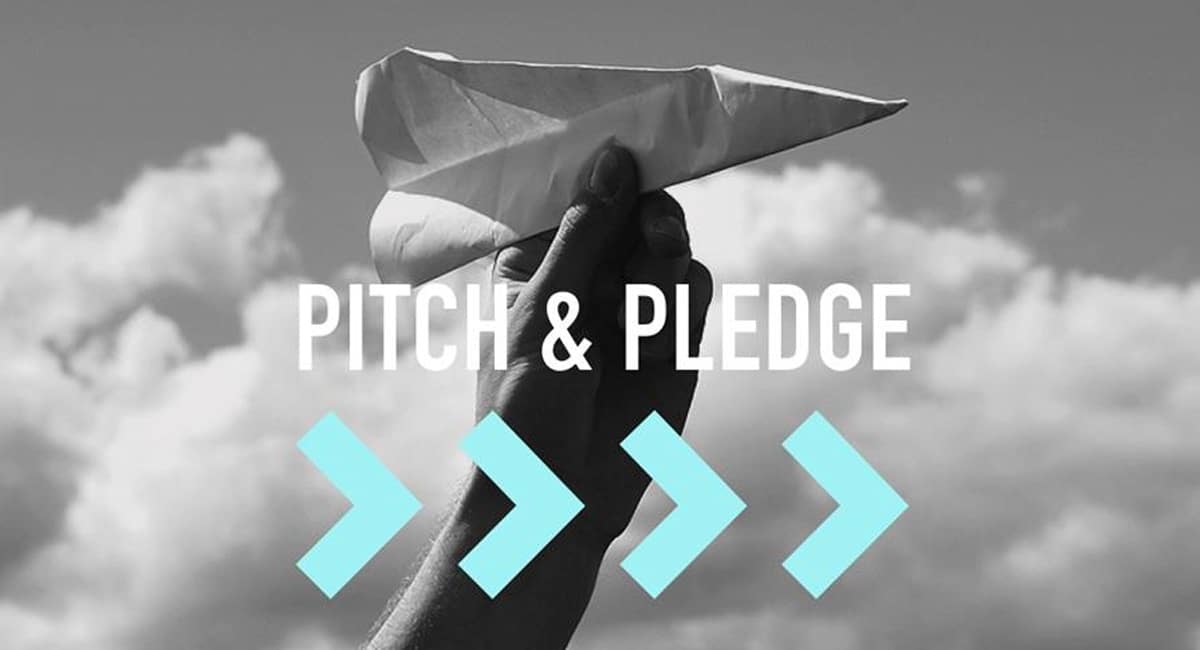
In celebration of our 30th anniversary which kicks off in November this year, we are preparing our very first live-crowdfunding ‘Pitch + Pledge’ night on Thursday 14 November.
Meet and hear directly from leaders of three of our flagship programs: The Festival of Dangerous Ideas, Ethi-call and our Young Philosopher initiative. Each speaker will pitch live on stage for six minutes each, and then answer the audiences questions. What follows is an unforgettable live-pledging experience, based on The Funding Network’s popular format.
1. Support a Truly Independent Festival of Dangerous Ideas
The Festival of Dangerous Ideas is Australia’s original big thinking festival – bringing leading minds from around the world to explore life’s most problematic and divisive issues.
Delivered in partnership with Sydney Opera House for almost a decade, last year marked the start of an exciting new phase for FODI as we branched out on our own. The 2018 festival was a triumphant sell-out, and audiences told us they walked away with a feast of new ideas and perspectives.
While FODI is well-attended and widely loved, it’s also a hugely risky and expensive event to stage. Our insistence on finding the best international storytellers, and keeping ticket prices affordable for broad audiences, pushes us into uncomfortable financial territory.
Your support will help us stage FODI as a break-even event, and allow us to keep doing it, year after year.
2. Help Us Reach More People in Need with Ethi-call
We’re enormously proud of Ethi-call. It’s our free, independent, national helpline available to all. The service provides expert and impartial guidance to help people make their way through life’s toughest challenges, when there’s nowhere else to turn.
Calls can be about almost anything – from professional issues (fraud, corruption, conflicts of interests) through to the deeply personal (birth, death, relationships, families).
There’s no other service like Ethi-call, so we receive calls from all over Australia, and all over the world. Your assistance will allow us to train more counsellors and ensure more people in need know the service exists.
3. Fund a Young Philosopher
Thirty years ago, a young philosopher with a keen interest in ethics and democracy, Dr Simon Longstaff, was appointed as The Ethics Centre’s first employee and Executive Director – a position he continues to hold today.
We’ve engaged a number of budding minds over the years to bring fresh thinking to our work, most recently Dr Matthew Beard, who plays an increasingly vital role in what we do.
We’re seeking funding to secure another bright young philosopher into our team – to apply their learnings to deliver insights and tools to help people build the skills and capacity to live according to their values and principles.
An opportunity to create a ripple effect of change
It will be a highly engaging and memorable evening for everyone involved and is an opportunity for you to get involved in some very exciting, critical projects here at The Ethics Centre.
We are putting our hearts and work on the line for your support. Pitch and Pledge will kick off at 5.30pm Thursday 14 November, at Clayton Utz offices, 1 Bligh St Sydney. Pledging starts from $100.
Please RSVP to rosemary.smithson@ethics.org.au with your details and your guests’ names to book your place to join us.
MOST POPULAR
ArticleBeing Human
Philosophy must (and can) thrive outside universities
ArticleBeing Human
Ozi Batla: Fatherhood is the hardest work I’ve ever done
ArticleHEALTH + WELLBEING
Parent planning – we should be allowed to choose our children’s sex
BY The Ethics Centre
The Ethics Centre is a not-for-profit organisation developing innovative programs, services and experiences, designed to bring ethics to the centre of professional and personal life.
Is masculinity fragile? On the whole, no. But things do change.

Is masculinity fragile? On the whole, no. But things do change.
Opinion + AnalysisRelationships
BY Raewyn Connell The Ethics Centre 15 OCT 2019
If we ask the question, ‘are men fragile?’ my answer would be that quite a number certainly are.
We can see this in the health data. Men, compared with women, have higher levels of some kinds of mental health problem – especially alcoholism and sociopathic disorders. Men, again compared with women, have higher levels of occupational injury and coronary heart disease, higher rates of completed suicide, and – especially young men – much higher rates of injury and death on the road.
These are all long-standing patterns, and society should provide support in the form of men’s health programmes. We should also ask why these patterns exist – given that men’s bodies are not notably weaker than women’s bodies. Which leads us to the question of masculinity.
If we ask the question, ‘is masculinity fragile?’ the answer looks different. Masculinity is a social pattern, and our societies usually define its hegemonic form in terms of power, aggression, wealth and authority. So it’s mainly men who are recruited to run the world.
We may celebrate a first female leader of some country or firm, but the enormous majority of Presidents, Prime Ministers and CEOs are actually blokes in suits. (93.4% of the CEOs of Fortune 500 corporations this year, for instance.) There have not been all that many women Popes, archbishops, chief muftis, abbots, generals, admirals, Treasurers or Directors of the CIA.
There’s a robust social basis for these patterns. Part of it is economic – for the real “gender gap”, look at the superannuation statistics. Part of it is institutional – even in our lovely universities, four-fifths of full professors are blokes, though admittedly some of them don’t wear suits.
Part of it is cultural – turn on the television, and you are likely to see a screen full of extremely fit young men giving a display of professional skill and force. Those who do it best become famous role models and are given a lot of money. Last year Cristiano Ronaldo took home 61 million dollars in salary from Real Madrid, plus 47 million in endorsements. And he was only the second highest paid footballer.
Of course there are other patterns of masculinity – we should really speak of masculinities in the plural. When the media speak of “toxic masculinity” they are pointing to a specific pattern of masculinity that is bidding for the dominant place by putting down alternatives. We have a spectacular example in the career of Mr Trump – it’s hard to miss the element of resentment and revenge in his story.
The patriarchal gender order is not a perfectly-functioning machine. Indeed, since the days of President Eisenhower and Sir Robert Menzies it has seen a deep erosion of legitimacy. What would they have made of the gay marriage survey! Well, we get a glimpse in the current authoritarian backlash around the world. Which goes to show, not that masculinity is fragile, but that gender orders change. They can change for the worse; I live in hope they will change for the better.
Raewyn Connell was one of the speakers at our IQ2 Debate ‘Masculinity – is it really so fragile?’. The debate took place at Sydney Town Hall Wednesday 23 October. She was joined by Catharine Lumby, Zac Seidler and David Leser. Watch the full debate here.
Ethics in your inbox.
Get the latest inspiration, intelligence, events & more.
By signing up you agree to our privacy policy
You might be interested in…
Opinion + Analysis
Relationships
Violent porn denies women’s human rights
Opinion + Analysis
Politics + Human Rights, Relationships, Society + Culture
In the face of such generosity, how can racism still exist?
WATCH
Relationships
Virtue ethics
Opinion + Analysis
Politics + Human Rights, Relationships
We’re being too hard on hypocrites and it’s causing us to lose out
BY Raewyn Connell
is one of Australia’s leading social scientists, specialising in class, gender, education, global patterns in knowledge, and most prominently, masculinity. She is one of four speakers at our upcoming debate, 'Masculinity – is it really so fragile'.
BY The Ethics Centre
The Ethics Centre is a not-for-profit organisation developing innovative programs, services and experiences, designed to bring ethics to the centre of professional and personal life.
Ethics Explainer: Peter Singer on charitable giving

Ethics Explainer: Peter Singer on charitable giving
Opinion + AnalysisRelationships
BY Dr Laura D’Olimpio The Ethics Centre 8 OCT 2019
Most people believe it is a good idea to help out others in need, if and when we can. If someone falls over in front of us, we usually stop to see if they need a hand or to check if they are OK.
Donating to charity is also considered to be helping others in need, but we may not always see the person we are helping in this case. Even so, charitable donations are viewed as praiseworthy in our society. We receive a sticker for placing spare change into a coin collection tin, and our donations are tax deductible.
Yet most people see donating to charity as a ‘nice thing to do’, but perhaps not a ‘duty’, obligation or requirement. In Kantian terms, it is ‘supererogatory’, meaning that it is praiseworthy, but above and beyond the call of duty.
However, Peter Singer defends a stronger stance. He argues that we should help others – however we can. All of us. This may look different for different people. It could involve donating money, time, signing petitions, or passing along old clothes to those who need them, for example.
If we can help, then we should, Singer argues, because it results in the greatest overall good. The small efforts of those who can do something greatly reduce the pain and suffering of those who need welfare.
In order to illustrate this argument, Singer provides us with a compelling thought experiment.
The ‘drowning child’ thought experiment
From his 1972 article, ‘Famine, Affluence, and Morality’, Singer starts with a basic principle:
“if it is in our power to prevent something very bad from happening, without thereby sacrificing anything morally significant, we ought, morally, to do it.”
This seems reasonable. He backs this claim up with the following concrete example:
“An application of this principle would be as follows: if I am walking past a shallow pond and see a child drowning in it, I ought to wade in and pull the child out. This will mean getting my clothes muddy, but this is insignificant, while the death of the child would presumably be a very bad thing”.
Obviously, we agree, we should save the child from drowning, even if it comes with the inconvenience and cost of ruining some of our favourite, expensive clothes and shoes. The moral ‘weight’ of saving a life far outweighs the cost in this scenario.
Yet, Singer extends this claim even further.
He notes that if we agree with this principle, then what follows from it is quite radical. If we act on the idea that we should always prevent very bad things from happening, provided we are not sacrificing anything too costly to ourselves, this makes a moral demand upon us.
The biggest implication is that, for Singer, it does not matter whether the drowning child is right in front of us, or in another country on the other side of the world. The principle is one of impartiality, universalizability and equality.
I can easily donate the cost of a new pair of shoes to a respected charitable organisation and save a life with the funds from that donation. In the same way as a moral agent would wade into the pond to rescue the drowning child, we can make some relatively small effort that prevents a very bad thing from occurring.
The ‘very bad thing’ may be that a child in a developing country starves to death or dies because their family cannot afford the treatment for a simple disease.
The expanding moral circle
Now, even for those in favour of charitable giving, some may argue that our duty to help does not extend beyond national borders. It is easier to help the child ‘right in front of us’, they may say. Our moral circle of concern includes our family and friends, and perhaps our fellow Australians.
But I am convinced by Singer’s argument that we ought to expand our moral circle of consideration to those in other countries, to those who live on planet Earth with us. The moral obligation to alleviate suffering has no borders.
And we are now most certainly ‘global citizens’. Thanks to our technology and growing awareness of what occurs around the globe, we have outgrown a nationalistic model and clearly inhabit an international world.
Global Citizens
In his 2002 book, One World: the ethics of globalisation, Singer supports the notion of the global citizen which views all human beings as members of a single, global community. The global citizen is someone who recognises others as more similar to rather than different from oneself, even while taking seriously individual, social, cultural and political differences between people.
In a pragmatic sense, global citizens will support policies that extend aid beyond national borders and cultivate respectful and reciprocal relationships with others regardless of geographical distance or other differences (such as those related to race, religion, ethnicity, disability, sexuality, or gender identification).
For a long time now, Singer has also been pointing out that we are all responsible for important issues that are affecting each and every one of us. Back in 1972, he claimed, “unfortunately, most of the major evils – poverty, overpopulation, pollution – are problems in which everyone is almost equally involved.”
And, with our technology, media and the 24 hour news cycle, we are now confronted with the pain and suffering of those distant others in ways that ensure they are immediately present to us. We can no longer claim ignorance of the help required by others, as social media brings their images and pleas directly to our handheld devices.
So, do we have an obligation to alleviate suffering wherever it is found? Does this obligation extend beyond national borders? Should we do what we can to prevent very bad things from happening, provided in doing so we do not have to sacrifice anything too drastic or comparable? (for instance, we need not reduce ourselves to the levels of poverty of those we seek to assist in doing so).
If you answered yes, then you may already think of yourself as a global citizen.
Ethics in your inbox.
Get the latest inspiration, intelligence, events & more.
By signing up you agree to our privacy policy
You might be interested in…
Opinion + Analysis
Relationships, Society + Culture
Meet Dr Tim Dean, our new Senior Philosopher
Opinion + Analysis
Politics + Human Rights, Relationships
How to have a conversation about politics without losing friends
Explainer
Relationships
Ethics Explainer: Plato’s Cave
Explainer
Relationships
Ethics Explainer: Scepticism
BY Dr Laura D’Olimpio
Dr Laura D’Olimpio is senior lecturer in philosophy of education at the University of Birmingham, UK, and co-edits the Journal of Philosophy in Schools.
BY The Ethics Centre
The Ethics Centre is a not-for-profit organisation developing innovative programs, services and experiences, designed to bring ethics to the centre of professional and personal life.
Accountability the missing piece in Business Roundtable statement

Accountability the missing piece in Business Roundtable statement
Opinion + AnalysisBusiness + Leadership
BY Dennis Gentilin The Ethics Centre 3 OCT 2019
Over the past few weeks a lot has been written about the “Statement on the Purpose of a Corporation” issued by the Business Roundtable in the United States.
The Business Roundtable, an association of chief executive officers from America’s leading companies, has shifted its position on who a corporation principally serves.
The original statement, published in 1997, suggested that companies exist to serve its shareholders. The new statement, signed by 163 chief executive officers, states that “While each of our individual companies serves its own corporate purpose, we share a fundamental commitment to all of our stakeholders.”
This “stakeholder approach” to corporate responsibility is not in itself ground-breaking. Nor is it a recent invention. In Johnson and Johnson’s corporate credo developed in 1943, the company lists patients, doctors and nurses as its primary stakeholders, followed by employees, customers, communities and finally shareholders.
Indeed, the shift to a stakeholder approach may not be as profound in practice as some have suggested. Even the Business Roundtable have said that the previous statement “does not accurately describe the ways in which we and our fellow CEOs endeavour every day to create value for all our stakeholders, whose long-term interests are inseparable.”
Given this, it is possible that chief executive officers only support the stakeholder approach to the extent that it benefits both themselves and the shareholder. And we should not necessarily decry this. Adam Smith, sometimes referred to as the “father of economics”, argued that individual self-interest can produce optimal outcomes, the source of his so-called “invisible hand”.
Even Milton Friedman, the much-maligned University of Chicago economist who is often held out as being the most vocal advocate for shareholder primacy, was not ignorant to the possibility that looking after the needs of stakeholders is not necessarily at odds with generating superior returns for shareholders in the long run. Famously, Friedman wrote:
“It may well be in the long-run interest of a corporation that is a major employer in a small community to devote resources to providing amenities to that community or to improving its government. That may make it easier to attract desirable employees, it may reduce the wage bill or lessen losses from pilferage and sabotage or have other worthwhile effects.”
However, as committed as the Business Roundtable might be, circumstances will prevail that are not supportive of the stakeholder approach. Uncompetitive markets result in companies benefiting at the expense of consumers. Seemingly sensible incentive schemes can drive perverse outcomes. And a company’s products, despite being highly valued by its customers, can have broader, deleterious consequences (fossil fuel companies producing carbon dioxide, social media companies empowering covert actors, and technology companies producing “e-waste” are three examples of the latter).
The signatories to the revamped Statement on the Purpose of a Corporation would have you believe that they can be trusted to manage these types of scenarios. We should be cautious taking them at their word. History shows that even well-intentioned chief executives find it extraordinarily difficult to drive the required change in a system where the incentives endorse the status quo. And in some cases, regardless of how hard they might try, they do not have the ability to do so. The most lucid corporate purpose statement won’t save us here.
It is therefore noteworthy that the Business Roundtable has omitted the idea of accountability from its statement. If chief executive officers are serious about serving all stakeholders, how will they be held accountable?
Milton Friedman also had something to say about this. He believed that corporations should conform “to the basic rules of society, both those embodied in law and those embodied in ethical custom.” But more importantly, as laissez faire as he was, he acknowledged that there was a role for government to “enforce compliance” and hold those who don’t “play the game” accountable.
Arguably this is the most important piece of the puzzle. Strong public institutions that develop good policy and hold corporations accountable. It is also the piece that is currently missing.
The recent financial services Royal Commission was a demonstration of what can happen when boundaries are established but not enforced. In a recent speech delivered by Commissioner Kenneth Hayne, he asked us to “grapple closely” with what the seemingly endless calls for Royal Commissions in Australia “are telling us about the state of our democratic institutions.”
But more relevant to this essay, Commissioner Hayne also provided his view on purpose statements and industry codes in the Royal Commission’s final report. He labelled them as mere “public relations puffs”, proposing that the only way they can be effective is by making them enforceable:
“If industry codes are to be more than public relations puffs, the promises made must be made seriously. If they are made seriously (and those bound by the codes say that they are), the promises that are set out in the code … must be kept. This must entail that the promises can be enforced by those to whom the promises are made.”
To be sure, the stance taken by the Business Roundtable should be applauded. Their intentions are without question noble. But more powerful would be a description of how they are going to hold themselves accountable to the statement and create the conditions that deliver value for all their stakeholders over the long-term.
Of course, this exercise would reveal the costs (financial and otherwise) that are associated with being genuinely committed to positive outcomes for all stakeholders. For some chief executive officers, the price would be too high. And because, like all of us, chief executives have their limits, so too does self-regulation.
Ethics in your inbox.
Get the latest inspiration, intelligence, events & more.
By signing up you agree to our privacy policy
You might be interested in…
Opinion + Analysis
Business + Leadership
Banks now have an incentive to change
Big thinker
Society + Culture, Business + Leadership
Big Thinker: Ayn Rand
Opinion + Analysis
Business + Leadership, Science + Technology
MIT Media Lab: look at the money and morality behind the machine
Opinion + Analysis
Business + Leadership, Politics + Human Rights








